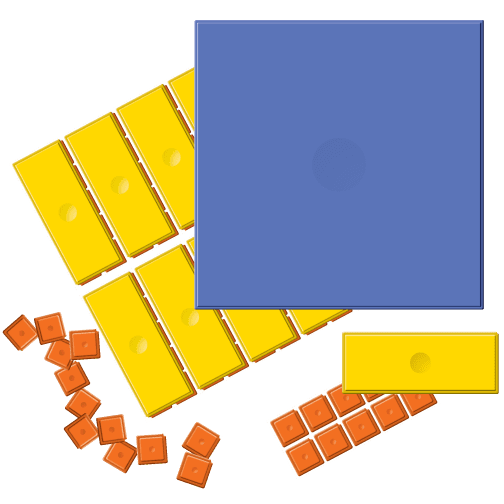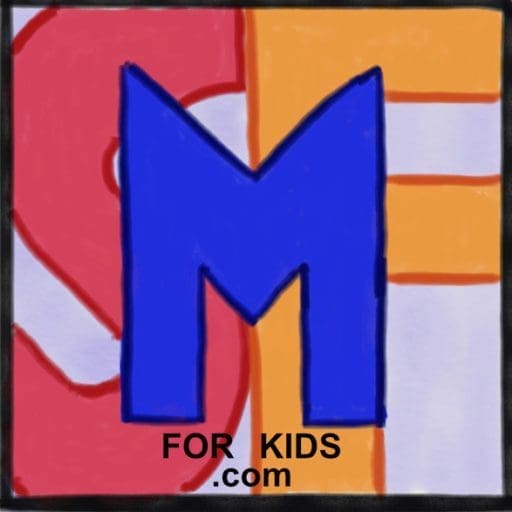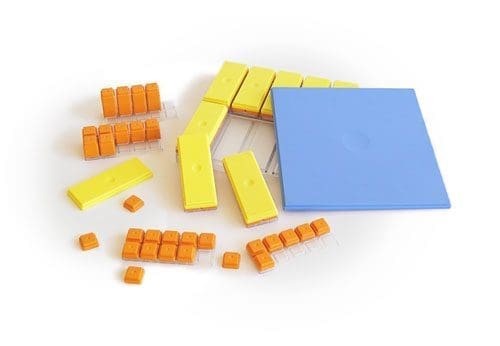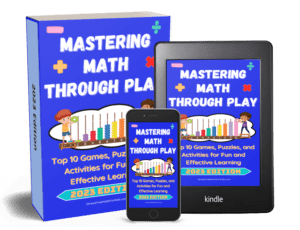I mentioned in a previous post that I had three favorite sessions when I attended the Conference for the Advancement of Math Teaching this summer. Two were sessions I went in to the conference excited about (Kim Sutton of Creative Mathematics and Peter Liljedahl of Building Thinking Classrooms.) My surprise favorite was the session I attended with Kimberly Rimbey, the chief learning officer of KP Mathematics. Her session, KP Mathematics Ten Frame Grows Up, demonstrated how the ten frame, a manipulative commonly used in kindergarten classrooms, can be used at all levels of math.
This is of course because our entire number system is based on patterns of ten! This understanding of place value is the foundation for ALL math! Kimberly’s mantra was “What happens in the ones place happens in all the places.” (so similar to my own, “Big numbers work the same way small numbers do.”)
Ten frames are actually fabulous for teaching decimals! They clearly show students how the decimal point is not the center- the ones place is! Every number names the number of ones. (Her example: 5.76 is 5 ones and 76 hundredths)
In the workshop we used both physical manipulatives and a sketch book method of drawing them.
Physical Manipulatives

The manipulatives consist of orange square tiles and a small transparent ten frame that holds up to ten orange tiles. The tiles actually click into the frame. The full system also includes yellow grouping tiles (that cover ten orange square tiles), a large ten frame that can hold ten groups of ten, and blue grouping tiles (that cover ten yellow tiles or one hundred orange tiles). This internalizes the nesting of place value. They are groupable rather than pregrouped like traditional base ten blocks. Students do not have to count to trade. (Here is a full comparison between these and base ten blocks .)
The tiles also allow you to represent the four operations in a way that will build student understanding. You can stack the manipulatives to multiply. Here’s a video example for multi digit division.
You can buy the ten frame tiles directly from KP Mathematics or they are also available virtually as a free app.
Sketchbook
The sketch book method uses language groups of dots for ones, vertical lines for tens and open circles for hundreds in a ten frame formation. Ten frames are drawn touching each other. You can use markers with the same colors as the tiles and demonstrate the symmetry of places around the ones place. Students can use sketches to represent very large numbers. They can clearly see how the pattern of ones/tens/hundreds generalizes throughout the entire base ten system. They can come to an understanding of powers of ten.
For More Information
If you are interested in learning more, Kim does a four part FREE virtual training three times a year. The upcoming session includes:
- The Ten Frame Grows Up: Making Numbers Connected & Visible From Counting to Ten to Decimals
- Side By Side Math: A Dynamic Method That Makes Learning Stick
- Asking the Right Questions
- Ten Frame Mathematics
Alternatively you can buy a four book series here.
If you have furrther questions about KP Mathematics Ten Frame Grows Up, you can also contact Kim at kim@kpmathematics.com or check out the website at www.kpmathematics.com for many more resources! You can even sign up for a free strategy session.



